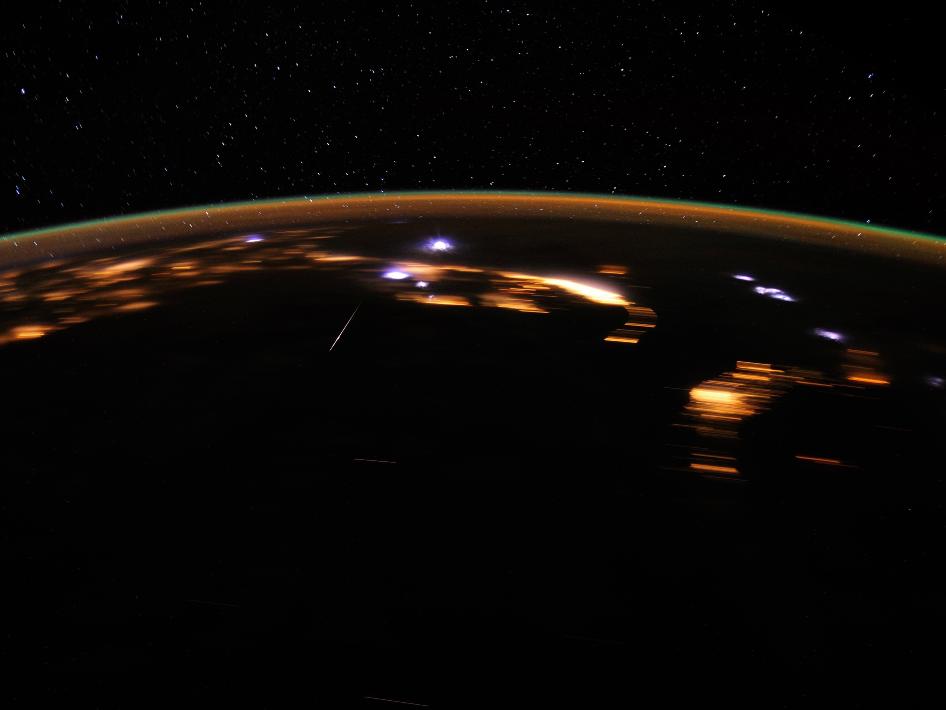Lyrid Meteor Shower Peaks this Weekend

An annual meteor shower is set to peak this weekend, but the showing likely won't be as strong as it has been in years past.
The Lyrid meteor shower should give skywatchers in darkened parts of the world a decent show late Sunday night (April 21) and early Monday morning (April 22), but the glare from a nearly full moon will probably impede the view for many stargazers.
"The Lyrid meteor shower will be best seen in the early morning hours of April 22," officials from the Space Telescope Science Institute said in a video. "Moonlight will interfere with this year's display, but away from city lights, you might see up to 20 meteors per hour."
NASA meteor scientist Bill Cooke was a bit more pessimistic, telling SPACE.com via email that viewers under dark skies can expect to see about 10 meteors per hour during the peak, which is just three days before the April 25 full moon.
Meteor showers like the Lyrids occur when the Earth passes through pieces of cosmic debris left behind by periodic comets as they orbit the sun. These sloughed-off particles enter and burn up in the planet's atmosphere, creating brilliant streaks every year.
The Lyrids — named because they appear to originate from the constellation Lyra — were spawned from a comet known as C/1861 G1 Thatcher that flies past the Earth once every 415 years. This shower has been observed in mid-April for at least 2,500 years, according to NASA scientists.
Editor's note: If you snap an amazing photo or shoot some incredible video of the Lyrids or any other celestial object or event, and you'd like to share it for a possible story or image gallery, please send images and comments, including location information, to Managing Editor Tariq Malik at spacephotos@space.com.
Breaking space news, the latest updates on rocket launches, skywatching events and more!
Follow Miriam Kramer @mirikramer and Google+. Follow us @Spacedotcom, Facebook and Google+. Original article on SPACE.com.

Miriam Kramer joined Space.com as a Staff Writer in December 2012. Since then, she has floated in weightlessness on a zero-gravity flight, felt the pull of 4-Gs in a trainer aircraft and watched rockets soar into space from Florida and Virginia. She also served as Space.com's lead space entertainment reporter, and enjoys all aspects of space news, astronomy and commercial spaceflight. Miriam has also presented space stories during live interviews with Fox News and other TV and radio outlets. She originally hails from Knoxville, Tennessee where she and her family would take trips to dark spots on the outskirts of town to watch meteor showers every year. She loves to travel and one day hopes to see the northern lights in person. Miriam is currently a space reporter with Axios, writing the Axios Space newsletter. You can follow Miriam on Twitter.
